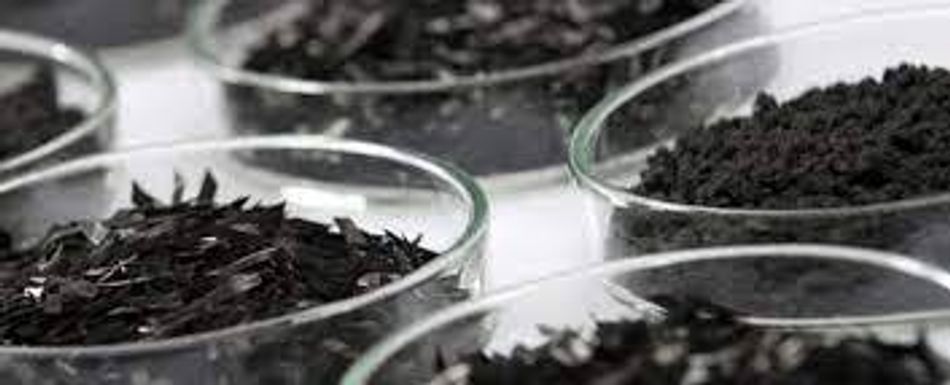Carbon Fiber Recycling: Accelerating Aerospace Circularity
End-to-end recycling solutions deliver the benefits of carbon fiber composites with a more circular approach.

Source: Mitsubishi Chemical Group
Circular economy for composites
Reducing resource use and greenhouse gas emissions from the production and use of goods across a variety of industries is becoming increasingly important. Climate change, energy costs, waste management and scarcity of raw materials are driving the need for a paradigm change in our economy. The 'take-make-dispose' mindset of the existing economy, in which materials are extracted, manufactured into products, and then thrown away, is intrinsically unsustainable. In contrast to this “linear economy,” the circular economy concept strives for sustainability by minimizing waste and, when possible, maintaining resources at their highest value.
You may already know that composites are inherently difficult to recycle due to their separate constituent phases. Composites are a combination of two materials: the reinforcing phase and the matrix. Most commonly, the matrix is a polymer. The reinforcing phase is typically constituted by fibers, such as glass fiber or carbon fiber. Compared to traditional materials, composites have attractive qualities that combine low weight and high mechanical resistance. For this reason, they are becoming increasingly important in the automotive and aerospace industries to reduce fuel consumption and emissions. However, at the end-of-life, composites are frequently landfilled or incinerated since they are intrinsically hard to recycle[1].
In recent years, carbon fiber-reinforced composites (CFRCs) have played a crucial role in manufacturing lighter, stronger, and more durable components, especially for the aerospace industry. Carbon fiber offers specific advantages such as durability in harsh conditions and at high temperatures, abrasion resistance, and corrosion resistance. Because of this, the demand for carbon fiber is rapidly increasing and it has been estimated to reach 117,000 tonnes by the end of this year. In the aerospace industry, about 6000-8000 aircrafts will reach the end of their service life by 2030.[2] Since a total of 50% of the Boeing 787 Dreamliner and Airbus A350 aeroplane bodies are composite materials, the aerospace industry will potentially produce enormous composite waste.
Virgin carbon fiber (vCF) is one of the most widely used materials for aerospace, providing the lowest weight compared to both steel and glass. This leads to a significant reduction in fuel consumption compared to traditional materials, which in turn results in lower CO2 emissions of aircraft across their lifetime of over 20 years. The manufacture of vCF, however, is an expensive and energy-intensive process that has detrimental repercussions for the environment. The embodied energy of vCF, i.e., the amount of energy required for manufacture, is very high compared to other materials. For vCF the embodied energy is 183-286 MJ/kg, compared to 13-32 MJ/kg for glass fiber and 110-210 MJ/kg for stainless steel.[2] Furthermore, the production of vCF generates hazardous compounds such as hydrogen cyanide, ammonia, carbon monoxide, carbon dioxide, nitrogen oxide and volatile organic compounds (VOCs).
In this context, recycled carbon fiber (rCF) offers a sustainable alternative, due to its lower energy requirements and low environmental impact. One of the main challenges to produce rCF in the past has been the use of thermoset polymer matrices. Because the resin hardening process is irreversible, liberating the fibers from the matrix is extremely difficult. Thermoset composites employed in the aerospace sector also require long cycle times, lasting several hours, due to the composite curing process, which takes place in capital- and energy-intensive autoclaves.
Delivering recycled carbon fiber
Industrial carbon fiber recycling approaches can be classified in two main categories: mechanical recycling and thermal recycling.[3] Mechanical recycling is one of the most promising techniques, especially for thermoplastic composites. While traditional CFRCs use thermoset matrices, advanced thermoplastic composites are on the rise. Significantly, thermoplastic CFRCs can easily undergo mechanical recycling without loss of material properties.
In mechanical recycling, the composites are crushed, ground, milled or shredded. The goal is to reduce the composite materials into particles between 0.05 and 10 mm in size. Afterwards, the resulting materials can be heated and re-molded to produce the desired components. The main advantage of this approach is that it can recover both carbon fiber and matrix. Furthermore, no hazardous chemicals are used or produced in the process.[3]
Thermal recycling, also known as pyrolysis, consists in the thermal decomposition of the polymer matrix. Typically, the process is conducted in an inert atmosphere at temperatures between 350-700 °C. The main advantage of this approach is that it can deliver long fibers with exceptional mechanical properties. You may be wondering how much energy can be saved by adopting this approach. Surprisingly, it has been estimated that this method consumes only 10-50% of the total energy required to produce virgin carbon fiber.[2] This makes it one of the most sustainable and efficient approaches for carbon fiber recycling.
Carbon fiber recycling: an aerospace case study
Reducing the amount of waste going to landfills is one of the main challenges of the aerospace industry, driven both by consumer demands and industry standards. Boeing is working towards this goal by replacing traditional materials with more sustainable, recycled materials without compromising performance.
In this context, Mitsubishi Chemical Group (MCG) Advanced Materials is working with Boeing to help them process and evaluate KyronTEX® thermoplastic composites for sidewall panels on their aircraft. MCG Advanced Materials is advising Boeing on process technologies to utilize this advanced composite product. The goal is to devise cost-effective, more streamlined processes using sustainable materials while meeting Boeing’s quality standards and aerospace industry specifications.
Boeing is looking to improve resource efficiency in the production of the interior panels of their aircraft by transitioning from a traditional thermoset process to one utilizing thermoplastics. To do so cost-effectively and without loss of quality, it is necessary to move beyond traditional material options and the process technology used to manufacture them. The KyronTEX® thermoplastic composite technology platform may enable Boeing to achieve these objectives.
MCG Advanced Materials introduced Boeing to their recycled carbon fiber material, KyronTEX®. It is a thermoplastic composite technology platform that requires less resource-intensive manufacturing to achieve the desired part performance. MCG worked with them to fabricate prototype cabin sidewall panels from this material. Between recycled sourcing and fabrication efficiencies, the use of KyronTEX® composite in cabin sidewall panels may contribute to a significant reduction in emissions at every stage of the part’s lifecycle, from raw material through manufacturing.
MCG Advanced Materials has provided Boeing with end-to-end support for this case study – working with them on their processing equipment and sharing their technical knowledge around fabricating thermoplastic composite parts to facilitate Boeing’s efforts in reducing waste and costs. If successful, utilization of MCG Advanced Materials recycled KyronTEX® composite would enable Boeing to stay at the forefront of sustainable practices within the Aerospace Industry. Turning to simplified composite technology processes and innovative recycled materials, MCG Advanced Materials and Boeing are cooperating to reduce the amount of aerospace waste going to landfills.
Composite Engineering Challenge
The Composite Engineering Challenge invites innovators, entrepreneurs, and early adopters that have the ambition to scale their functioning prototype or small series production (‘0-’00) of an application, part, or product with lightweight carbon composite materials (CFRP).
The winning entry will be rewarded with a partnership with Growth Garage, Business Incubator of the MCG Advanced Materials Division. This partnership package is valued at $25,000 and will be tailored to the winning team’s needs according to their current business and product development stage.
Read more about the challenge here.
Key Dates
| Composite Challenge Launch | Monday, October 24th, 2022 |
| Composite Challenge Webinar. Register here. | Thursday, November 17th, 17:00 - 18:00 CET. |
| Early Bird Submission Closes | Wednesday, November 30th, 2022 |
| Challenge Close | Saturday, December 31st, 2022 |
| Finalists Announced | Wednesday, January 11th, 2023 |
| Wevolver Community Vote | Wednesday, January 11th – Friday 20th, 2023 |
| Winners announcement | Tuesday, January 31, 2023 |
References
1. Chatziparaskeva G, Papamichael I, Voukkali I, Loizia P, Sourkouni G, Argirusis C, et al. End-of-Life of Composite Materials in the Framework of the Circular Economy. Microplastics. 2022;1(3):377–92.
2. Pakdel E, Kashi S, Varley R, Wang X. Recent progress in recycling carbon fibre reinforced composites and dry carbon fibre wastes. Resour Conserv Recycl [Internet]. 2021;166(November 2020):105340. Available from: https://doi.org/10.1016/j.resconrec.2020.105340
3. Isa A, Nosbi N, Che Ismail M, Md Akil H, Wan Ali WFF, Omar MF. A Review on Recycling of Carbon Fibres: Methods to Reinforce and Expected Fibre Composite Degradations. Vol. 15, Materials. 2022. p. 4991.


